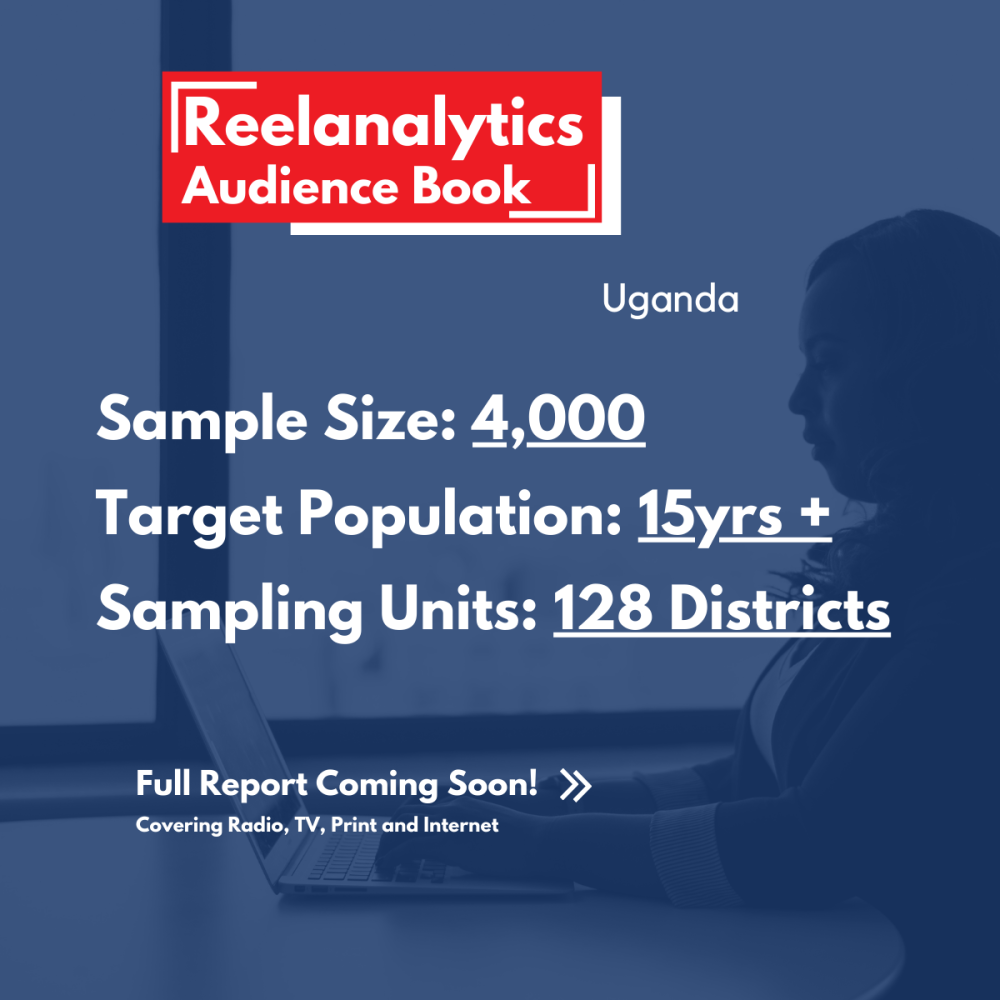Audience Measurement Solution in Uganda - ReelAnalytics

ReelAnalytics is set to launch audience measurement solution in Uganda. The solution will provide accurate, up-to-date data for TV, radio, print and the internet. Brands, publishers and media owners will be able to reach their target audience effectively and measure their return on media investment. The data collection methodology used is mCAPI (Mobile Computer Assisted Personal Interview). This methodology allowed us to screen the respondents accurately, further prob for clarification on responses as well as pick nonverbal messages from body language and facial expressions.
Our sampling unit is 128 districts across the country with the target population being males and females who are 15 years and above. The sample size is 4,000 respondents distributed proportionately to the country’s current population size. The full report that will capture data across Radio, TV, Print and the internet is set to be launched within the coming month. Some of the deliverables to be expected include;
-
A detailed analysis of demographics
-
Segmentation by the 16 sub-regions that constitute the 128 districts
-
Advanced dashboard with access to the data
-
Post campaign evaluation
To speak to the Reelanalytics team about the upcoming Uganda audience data launch, please contact us today.
Why Brands Need Audience Measurement
1. Differentiate Audience by Demographics and BehaviorDifferent audience demographics undoubtedly consume media differently. Age, gender, or location can play a key part in these consumption habits. Demographic audience analysis allows publishers to see a true picture of media exposure. What do your potential consumers hear, read, and see- at what time? Audience measurement information allows publishers to obtain information from different channels, especially with the increasing selective media consumption.A regular assessment of media consumption will allow brands to inspire trust in alignment with business objectives and strategy.
2. Measure and Track Key Engagements
Advertising campaigns require a significant investment of time and money. How can businesses increase their chances of success? Channel Ratings, Impressions and Views are different. Why? When audiences are exposed to various media platforms, their attention is drawn to the most compelling content. Audience measurement enables a primary observation of the content connection. Besides the content itself, it is essential for brands to understand where and how media is consumed. As a result, a publisher can focus its efforts on opportune programs.The increasing access to the internet and devices drives media consumption. Therefore, monitoring consumers’ digital behaviour is crucial to reach them with increasingly personalized, impactful messages which reinforce ties with the brand.
3. Approximate Impact on Marketing Goals
All marketing campaigns truly aim to increase long-term and short-term sales. To achieve this, online and offline advertising strategies are employed to achieve a set return on investment. Audience measurement approximates a campaign’s true impact on sales volume, implying the success or failure of the marketing campaign. Data analysis provides a comprehensive view of the target audiences by combining appropriate research methodologies to monitor the audience’s exposure to advertising campaigns.
4. Post Campaign Evaluation
Traditional advertising is bounded by some unique challenges;
-
There is no single way to award success to specific ad campaigns.
-
Traditional metrics alone cannot provide a map of a customer’s journey from interaction to purchase.
Because of this, advertisers should be guided on audience measurement from Ad's placement performance. Gross rating points (GRP’s), share, reach, CPM, and other similar audience measurement metrics guide advertisers to know how many people had the opportunity to see or hear the ad, and how many times they were reached.